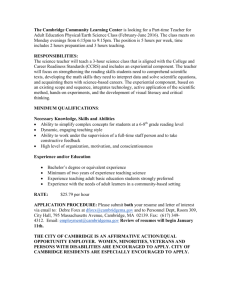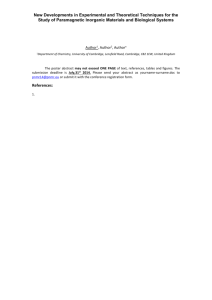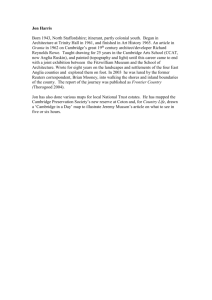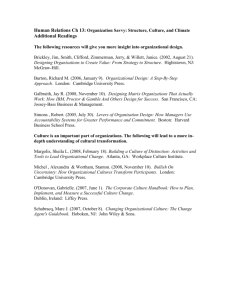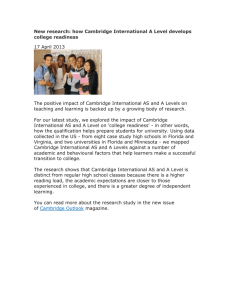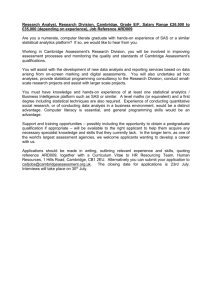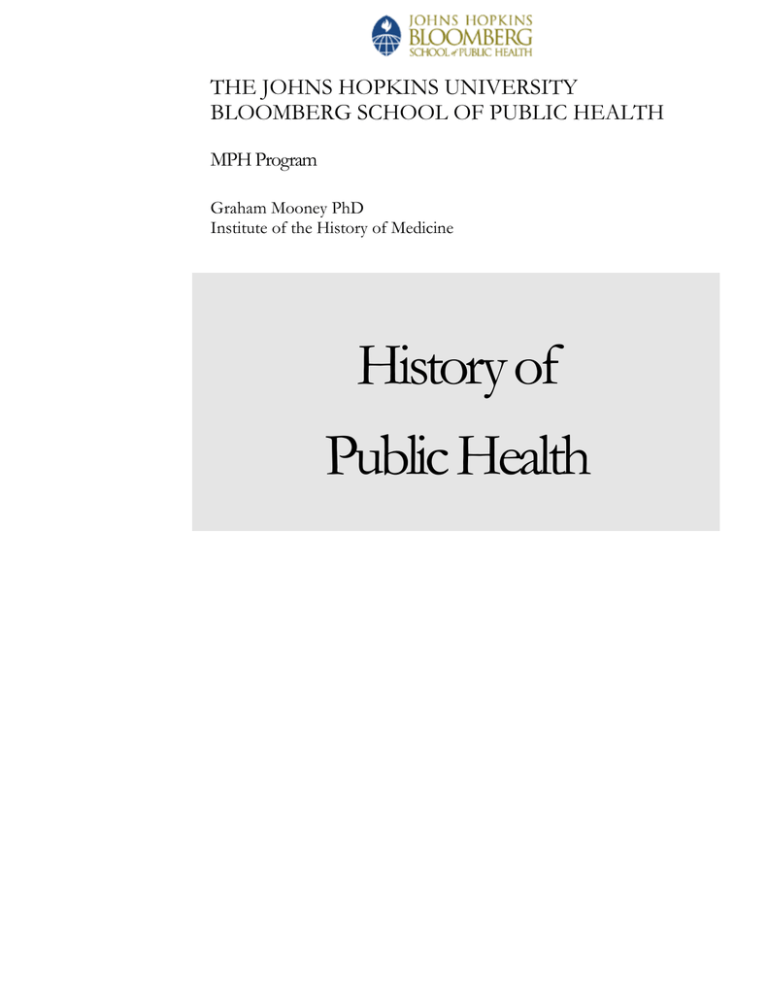
THE JOHNS HOPKINS UNIVERSITY
BLOOMBERG SCHOOL OF PUBLIC HEALTH
MPH Program
Graham Mooney PhD
Institute of the History of Medicine
History of
Public Health
General reading
General readings are posted on the course website. Most of the classspecific readings should be available on the eReserves website.
David Arnold. 1993. Colonizing the body. State medicine and epidemic disease in nineteenth century
India. Berkeley, Los Angeles and London: University of California Press.
Frederick F. Cartwright. 1977. A social history of medicine. London and New York:
Longman.
John Duffy. 1990. The sanitarians: a history of American public health. Urbana: University of
Illinois Press.
Steven Feierman and John M. Janzen (eds.) 1992. The social bases of health and healing in
Africa. Berkeley: University of California Press.
J. N. Hays. 1998. The burdens of disease. Epidemics and human response in Western history. New
Brunswick, New Jersey and London: Rutgers University Press.
Ann. F. La Berge. 1992. Mission and method. The early nineteenth century French public health
movement. Cambridge and New York: Cambridge University Press.
Charles Leslie (ed.). 1976. Asian medical systems. Berkeley: University of California Press.
Charles Leslie (ed.). 1992. Paths to Asian medical knowledge. Berkeley: University of
California Press.
A. Hardy. 2001. Health and medicine in Britain since 1860. Basingstoke, UK: Palgrave.
Mark Harrison. 1994. Public health in British India: Anglo-Indian preventive medicine, 1859-1914.
Cambridge and New York: Cambridge University Press.
Milton J. Lewis. 2003. The people's health: public health in Australia, 1788-1950. Westport,
Conn. and London: Praeger.
* Deborah Lupton. 1995. The imperative of health. Public health and the regulated body. London
and California: Sage. Especially Chs 1 and 2.
Leonore Manderson. 1996. Sickness and the state. Health and illness in colonial Malaya, 18701940. Cambridge, UK and New York: Cambridge University Press.
William H. McNeill. 1977. Plagues and peoples. New York: Doubleday.
Alex Mercer. 1990. Disease, mortality, and population in transition: epidemiological--demographic
change in England since the eighteenth century as part of a global phenomenon. Leicester, UK
and New York: Leicester University Press.
* E. Perdiguero, J. Bernabeu, R. Huertas, E. Rodríguez-Ocaña. 2001. History of health, a
valuable tool in public health. Journal of Epidemiology and Community Health, 55:9, 66773.
* D. Porter. 1993. Public health. In W. F. Bynum and R. Porter (eds.). Companion encyclopedia
of the history of medicine. Volume 2. London and New York: Routledge, pp. 1231-1261.
Dorothy Porter (ed.). 1994. The history of public health and the modern state. Amsterdam:
Rodopi.
* Dorothy Porter. 1999. Health, civilization, and the state: a history of public health from ancient to
modern times. London: Routledge.
Roy Porter. 1997. The greatest benefit to mankind. London: Harper Collins. Ch 13 and 20.
Kabita Ray. 1998. History of public health: colonial Bengal 1921-1947. K. P. Bagchi and Co.:
Calcutta.
* George Rosen. 1993 (expanded edn.). A history of public health. Baltimore: Johns Hopkins
University Press.
Susan Gross Solomon and John F. Hutchinson. 1990. Health and society in revolutionary
Russia. Bloomington and Indianapolis: Indiana University Press.
2
Introduction
You will all have your own definition of what public health is; each will be
perfectly valid. One of the challenges of this course is for you to grasp how
events and processes that took place in the past shape that definition. By
developing an historical perspective to public health, hopefully you will be able
to reinforce, revise, or debunk your definition. This lecture will provide an
introduction to the history of modern public health in general and to the course
in particular. We will touch here on public health in antiquity and the middle
ages, leading up to the main focus of the course, the modern period.
Recurrent themes in the history of public health will be highlighted, such as the
relationship between humans and the environment, the role of urbanization,
the shifting interpretation of disease causation, the significance of
bacteriology, the changing epidemiological panorama, and the problems of
measuring the impact of public health on the health status of the population.
Recommended reading
Ann. F. La Berge. 1992. Mission and method. The early nineteenth century French public health
movement. Cambridge and New York: Cambridge University Press. Ch 1.
Deborah Lupton. 1995. The imperative of health. Public health and the regulated body. London
and California: Sage. Ch 1.
T. McKeown. 1979. The role of medicine: dream, mirage or nemesis? Princeton NJ: Princeton
University Press.
James C. Riley. 2001. Rising life expectancy: a global history. Cambridge and New York:
Cambridge University Press. Especially Ch 2.
Abdel Omran. 1971. ‘The epidemiological transition: a theory of the epidemiology of
population change,’ Milbank Memorial Fund Quarterly, 49, 509-38.
Theodore Tulchinsky and Elena A. Varikova. 2000. The new public health. An introduction for
the 21st century. New York: Academic Press. Ch 1.
Quarantine
Quarantine is a public health policy that can be traced to the Black Death of
the 14th century. Towns and cities developed systems of quarantine to
isolated travelers and merchandise that came from places known to be
infected. Other urban authorities would erect a cordon sanitaire through which
individuals could only pass with permission. These forms of control were
maintained well into the 19th century, particularly in the face of cholera
epidemics. As such, they illustrate a number of significant issues in the history
of public health. Did the historical priority for public health lie in the protection
of people or the protection of trade? What alternatives were there to
quarantine? How did quarantine affect the relationship between different parts
of the globe, such as Western Europe and Asia, and what was the impact on
international co-operation in public health? What does quarantine tell us about
traditional notions of person-to-person disease transmission? Did a public
health policy such as quarantine shift the blame for an epidemic on to nonindigenous or migrant populations?
3
Recommended reading
David Arnold. 1993. Colonizing the body. State medicine and epidemic disease in nineteenth century
India. Berkeley, Los Angeles: University of California Press. Chs 4 and 5.
Peter Baldwin. 1999. Contagion and the state in Europe, 1830-1930. Cambridge: Cambridge
University Press. Ch 2.
Ann G. Carmichael. 1998. ‘Epidemics and state medicine in Fifteenth-Century Milan’. In
Roger French et al (eds.). Medicine from the Black Death to the French Disease. Aldershot
UK: Ashgate, 221-47.
Carlo M. Cipolla. 1992. Miasmas and disease: public health and the environment in the preindustrial age. New Haven, CT: Yale University Press.
Carlo M. Cipolla. 1981. Fighting the plague in seventeenth-century Italy. Madison, WI: University
of Wisconsin Press.
Howard Markel. 1995. ‘Knocking out the cholera’: cholera, class, and quarantines in New
York City, 1892’, Bulletin of the History of Medicine, 69:3, 420-457.
Guenter B. Risse. 1988. ‘Epidemics and history: ecological perspectives and social
responses’, in Elizabeth Fee and Daniel M. Fox (eds.). Aids: the burdens of history.
Berkeley: University of California Press, 33-66.
Online version at: http://ark.cdlib.org/ark:/13030/ft7t1nb59n
Slack, P. 1985. The impact of plague in Tudor and Stuart England. London: Routledge and
Kegan Paul.
The Sanitary Idea
The second quarter of the nineteenth century is widely regarded as the period
in which ‘state medicine’ came of age. Originating in western Europe and
inextricably linked with the name of the British lawyer Edwin Chadwick, the
basis of the ‘sanitary idea’ was the creation of a central public health
administration which directed local authorities in the provision of drains,
sewers, street cleaning and the environmental regulation of housing,
nuisances and offensive trades. This lecture will seek to describe the
Enlightenment origins and key elements of this public health movement. In
particular, your attention will be drawn to the following features: Why was
medicine marginalized in this model of public health management? On what
mode(s) of disease causation was the ‘sanitary idea’ based? Was the
‘sanitary idea’ exported to other nations and other continents and, if so, with
what consequences?
Recommended reading
Christopher Hamlin. 1997. Public health and social justice in the age of Chadwick. Cambridge:
Cambridge University Press.
Christopher Hamlin. 1992. ‘Predisposing causes and public health in early nineteenth
century medical thought’, Social History of Medicine, 5:1, 43-70.
Mark Harrison. 1994. Public health in British India: Anglo-Indian preventive medicine
1859-1914. Cambridge: Cambridge University Press. Chs 7 and 8.
Dorothy Porter. 1999. Health, civilization, and the state: a history of public health from ancient to
modern times. London: Routledge. Part 2.
Simon R. S. Szreter. 1988. ‘The importance of social intervention in Britain’s mortality
decline c. 1850-1914: a re-interpretation of the role of public health,’ Social History of
Medicine, 1:1, 1-37.
4
World of work
As we observed in an earlier lecture, quarantine implies that the movement of
goods and people can carry dangers to the public health and therefore require
surveillance. This lecture will turn to other forms of public health surveillance,
in other words the monitoring and management of individuals or groups who
either have an infectious disease or are suspected of having one. In today’s
public health world, disease surveillance is associated with a set of
sophisticated information technologies that facilitate a rapid-response system
to disease outbreaks. There are also in existence⎯or are in the process of
being set up⎯surveillance systems that monitor, for example, hospital-related
infections and the trans-national movements of tubercular patients. This and
the subsequent class ask a number of related questions. What does society
require of disease surveillance? How did the close management and control
of diseased individuals come to be an accepted form of public health
intervention? How did infectious disease surveillance operate in a nontechnological world? What does public health surveillance tell us about the
societies that implement it? What have been the socio-medical costs and
benefits of the development of surveillance systems?
Places of work are environments loaded with health risks, from occupational
accidents on the one hand to the handling of hazardous materials on the
other. This lecture sketches out how occupational health, the regulation of the
workplace, and the medical inspection of school children, became legitimate
fields of concern for public health.
Recommended reading
Allison L. Hepler. 2000. Women in labor: mothers, medicine, and occupational health in the United
States, 1890-1980. Columbus: Ohio State University Press. Ch 3.
Bartrip, Peter W. J. 2002. The Home Office and the dangerous trades: regulating occupational disease
in Victorian and Edwardian Britain. Amsterdam and New York: Rodopi.
F. La Berge. 1992. Mission and method. The early nineteenth century French public health movement.
Cambridge and New York: Cambridge University Press. Ch 5.
Harrison, Barbara. 1995. The politics of occupational ill-health in late nineteenth century
Britain: the case of the match making industry. Sociology of Health and Illness, 17:1, 2041.
Harrison, Barbara. 1996. Not only the 'dangerous trades': women's work and health in Britain,
1880-1914. London and Bristol, P.A.: Taylor & Francis.
Holdsworth, Clare. 1998. Dr Thomas Arlidge and Victorian occupational medicine.
Medical History, 42:4, 458-475.
Leonore Manderson. 1996. Sickness and the state. Health and illness in colonial Malaya, 18701940. Cambridge, UK and New York: Cambridge University Press. Ch 6.
McCulloch, Jock. 2002. Asbestos blues: labour, capital, physicians and the state in South Africa.
Bloomington: Indiana University Press.
Randall M. Packard. 1989. White plague, black labor: tuberculosis and the political economy of
health and disease in South Africa. Berkeley, Los Angeles: University of California
Press. Especially Chs 3 to 6.
Reich, Michael R., and Goldman, Rose H. 1984. Italian occupational health: concepts,
conflicts, implications. American Journal of Public Health, 74, 1031-1041.
Weindling, Paul (ed.). 1986. The social history of occupational health. London and Dover N.H.:
Croom Helm.
5
Education and mothering
As we observed in the lecture on quarantine, ideas about controlling infected
individuals were not new to the nineteenth century, but it was in the modern
period that health authorities turned their attention as much to individuals as
to the public environment. This class will consider the development of two key
areas of public health policy that focused on the health management of
individuals in the domestic sphere: education and maternal health. Emphasis
here will be placed on how these policies interacted with earlier environmental
reforms, the rise of bacteriology, and the collection of statistics and
information.
Recommended reading
Rima D. Apple. 1987. Mothers and medicine: a social history of infant feeding, 1890-1950.
Madison, Wis.: University of Wisconsin Press, 1987.
David Armstrong. 1993. ‘Public health spaces and the fabrication of identity’, Sociology,
27, 393-410
Anna Davin. 1978. ‘Imperialism and motherhood’, History Workshop, 5, 9-65.
Bernard Harris. 1995. The health of the schoolchild: a history of the school medical service in England
and Wales. Buckingham and Philadelphia: Open University Press.
Leonore Manderson. 1996. Sickness and the state. Health and illness in colonial Malaya, 18701940. Cambridge, UK and New York: Cambridge University Press, especially Ch 7,
‘Domestic lives: reproduction, the mother and the child’, pp. 201-229.
Graham Mooney. 1999. ‘Public health versus private practice: the contested development
of infectious disease notification in late nineteenth century Britain’, Bulletin of the
History of Medicine, 73:2, 238-67.
Francis B. Smith. 1979. The people’s health. New York: Holmes and Meier. Ch 2.
Nancy Tomes. 1998. The gospel of germs: men, women, and the microbe in American life.
Cambridge, Mass.: Harvard University Press.
John Woodward. 1995. ‘The school medical officer before the school medical service;
England and Wales, 1850-1908’. In John Woodward and Robert Jütte (eds.). Coping
with sickness. Sheffield: European Association for the History of Medicine and
Health Publications, pp. 121-146.
Body spaces: from inoculation to immunization
With no known naturally occurring cases of the disease since 1977, smallpox
has been globally eradicated. It is one of the most tangible ‘successes’ for
public health. The lecture will provide an overview of the epidemiological
significance of smallpox and the role played by immunization in causing
mortality from this disfiguring disease to fall. Tracing backwards the steps of
this ‘triumph’, we can in fact see that smallpox immunization has a
complicated and contentious history that illustrates the problems that can
arise when a public health intervention seeks to penetrate the body itself. Our
focus will therefore turn to the popular protests that were made in objection to
vaccination in the nineteenth century, and parallels will be drawn with current
controversies surrounding the use of MMR vaccines for children.
6
Recommended reading
David Arnold. 1993. Colonizing the body. State medicine and epidemic disease in nineteenth century
India. Berkeley, Los Angeles and London: University of California Press. Ch 3.
Sanjoy Bhattacharya. 2001. ‘Redevising Jennerian vaccines?: European technologies,
Indian innovation and the control of smallpox in South Asia, 1850-1950’, in
Biswamoy Pati and Mark Harrison (eds.), Health, medicine and empire: perspectives on
colonial India. London: Sangam Books, pp. 217-69.
Nadja Durbach. 2000. ‘“They might as well brand us”: working-class resistance to
compulsory vaccination in Victorian England’, Social History of Medicine, 13:1, 45-62.
Paul Greenough. 1995. ‘Intimidation, coercion and resistance in the final stages of the
South Asian smallpox eradication campaign, 1973-1975’, Social Science and Medicine,
41:5, 633-45.
Donald R. Hopkins. 1983. Princes and peasants: smallpox in history. Chicago: University of
Chicago Press.
Anne Hardy. 1993. The epidemic streets: infectious disease and the rise of preventive medicine 18561900. Oxford: Clarendon Press. Ch 5.
C. R. Howard. 2003. ‘The impact on public health of the 19th century anti-vaccination
movement’, Microbiology Today, 30, 22-24.
Dorothy Porter and Roy Porter. 1988. ‘The politics of prevention: anti-vaccinationism
and public health in nineteenth century England’, Medical History, 32, 231-52.
Pieter H. Streefland. 2001. ‘Public doubts about vaccination safety and resistance against
vaccination’, Health Policy, 55, 159-72.
R. M. Wolfe and L. K. Sharp. 2002. ‘Anti-vaccinationists past and present’, British Medical
Journal, 325, 430-32.
Professionalization and expertise
So, how come you are here? This class considers the importance of
professionalization and expertise in cementing⎯or otherwise⎯public health’s
place in the field of medicine.
Recommended reading
Robert Beaglehole and Ruth Bonita. 1997. Public health at the crossroads: achievements and
prospects. Cambridge: Cambridge University Press.
Elizabeth Fee. 1987. Disease and discovery: a history of the Johns Hopkins School of Hygiene and
Public Health, 1916-39. Baltimore: Johns Hopkins University Press.
Elizabeth Fee and Roy Acheson (eds.). 1991. The history of education in public health. Health
that mocks the doctors’ rules. Oxford: Oxford Medical Publications. Ch 1 and Ch 9.
Kristine M. Gebbie, Linda Rosenstock, and Lyla M. Hernandez. 2002. Who will keep the
public healthy? Educating public health professionals for the 21st century. Washington DC:
National Academic Press.
Ann. F. La Berge. 1992. Mission and method. The early nineteenth century French public health
movement. Cambridge and New York: Cambridge University Press. Ch 8.
Jane Lewis. 1986. What price community medicine? The philosophy, practice and politics of public
health since 1919. Brighton, UK: Wheatsheaf Books. Introduction.
Deborah Lupton. 1995. The imperative of health. Public health and the regulated body. London
and California: Sage. Ch 2.
Graham Mooney. 1997. ‘Professionalisation in public health and the measurement of
sanitary progress’, Social History of Medicine. 10:1, 53-78.
7
R. K. Mutatkkar. 1995. ‘Public health problems of urbanization,’ Social Science and Medicine,
41:7, 977-81.
Alan Petersen. 1996. ‘The “healthy” city, expertise, and the regulation of space,’ Health and
Place, 2:3, 157-65.
Copyright 2005, The Johns Hopkins University and Graham Mooney. All rights reserved. Use of these materials permitted only in accordance with license rights
granted. Materials provided “AS IS”; no representations or warranties provided. User8assumes all responsibility for use, and all liability related thereto, and must
independently review all materials for accuracy and efficacy. May contain materials owned by others. User is responsible for obtaining permissions for use from
third parties as needed.

